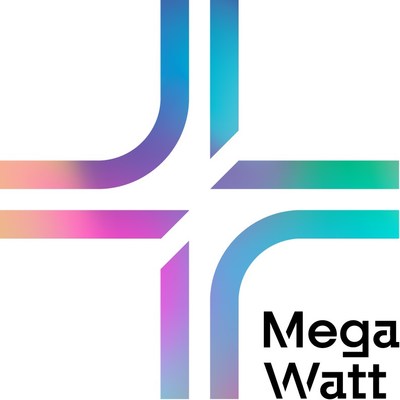Megawatt files NI 43 101 Technical Report for the Tyr Project, NSW and Century South Project, Queensland, Australia
Megawatt Lithium and Battery Metals Corp (OTC PINK: WALRF) announced the completion and filing of an NI 43-101 Technical Report for its Tyr Silver Project in New South Wales and Century South Project in Queensland, Australia. The report, prepared by Xplore Resources, highlights significant mineral occurrences, particularly silver, across both projects. The Tyr Project has over 145 recorded mineral occurrences, while the Century South location is noted for its proximity to the Century Mine, indicating potential for mineralization. Both projects show promise for further exploration.
- Tyr project hosts over 145 mineral occurrences, indicating strong potential for silver mining.
- Historical assays show significant silver grades, with findings up to 4,710g/t.
- Century South project is located on the same fault line as a major Zn-Pb deposit, suggesting mineral exploration potential.
- Limited drilling has been conducted in the Tyr Project area, which may hinder the assessment of its full potential.
- There have been sparse samples collected at the Century South site, delaying exploration progress.
Insights
Analyzing...
VANCOUVER, BC, May 7, 2021 /PRNewswire/ - Megawatt Lithium and Battery Metals Corp. (CSE: MEGA) (FSE: WR20) (OTC PINK: WALRF) (the "Company" or "Megawatt") is pleased to announce that it has completed and filed on SEDAR an NI 43 101 Technical Report for the Tyr Silver Project in New South Wales, Australia and Century South Project in Queensland, Australia. The report has been prepared by Xplore Resources Pty Ltd ("Xplore Resources") of Brisbane, Queensland, Australia. The Qualified Person for the Technical report is Matthew Stephens FAIG.
Highlights:
The Tyr project is located about 20km south-west via sealed road from the town of Tenterfield. The tenement covers 100 units for an area of 299km2.
The Tyr Project area is located over three (3) main Sub-provinces of New England Orogen;
- Central Block, which is mainly comprised by conglomerate, sandstone and siltstone.
Including some felsic igneous rocks and quartzite units;
- Tablelands Complex, which mainly comprises granite and mineralised related material;
- New England Orogen Granites (dominant lithology of porphyry and basalt).
The Tyr tenement hosts a large number of mineral occurrences according to evidence from historical mines within the exploration licence area. These activities were mostly focused on silver, lead, zinc, arsenic and tin. The Tyr exploration area contains a significant amount of silver occurrences which strikes north-west. Clive group contains major occurrences such as the Ecuador deposit consisting of 4710ppm silver and Torny Mine consisting of 1420ppm silver.
The Tyr project area has over 145 mineral occurrences recorded in the tenement. Those occurrences are hosted by the Early Permian Bondonga beds form two main clusters:
- the Mole River group in the northern part of the tenement and
- the Clive group in the southern part.
At these two areas, the mineral occurrences are structurally controlled and are related to the emplacement of the Mole Granite, which is classifies as a I-type Sn-W granite. Metal zonation around the granite is well developed, with proximal Sn-W, grading outwards from the intrusion to distal polymetallic Cu-Pb-Zn-Ag mineralisation. Evidence suggests that the Tyr Project Area is underexplored and there is significant potential for structurally controlled silver rich polymetallic vein/lode systems.
Obvious areas that warrant further exploration include the areas containing the Mole River and Clive group of mineral occurrences. Both of these areas are strongly mineralised and detailed field mapping and surface geochemical sampling suck as rock chip and soil sampling, followed by ground geophysical surveys including IP or even sub-audio magnetics (SAM).
Surface geochemical surveys within the Tyr project area have been completed by most of the past explorers. The geochemical surveys have included rock chip/grab, stream sediment, panned concentrate, soil sampling programs and high silver grades have been returned.
Significant silver assays from adits, shaft, and other workings, significant silver assays from surface samples, and significant assays from drilling samples have all been recorded. The mineral occurrences are structurally controlled and are associated with joints, faults, shear zones and lithological boundaries that have controlled emplacement of mineralising fluids.
Despite the large number of mineral occurrences and historical workings and significant silver assays up to 4,710g/t, there has been little drilling in the Tyr Project area. While past exploration focused almost exclusively on the historical working, there was little emphasis on testing the strike potential of the structures and/or lithologies that control mineralisation. Modern exploration techniques are proposed to fully exploit the potential of the tenement, particularly the mineralised clusters of historical silver-zinc-lead mines.
The Century South tenement is located approximately 204km NW of the town of Mount Isa, 122km NE of the town of Mount Isa Camooweal and 61km SW of the town of Mount Isa Gregory.
Generally, the Century South tenement has been sparsely sampled considering its proximity to the major Zn-Pb massive sulphide deposit of Century Mine. Crucially, the tenement covers land on the exact same major fault strike as the mine. The major fault complex of the Termite Range Fault crosscuts the centre of the tenement NW-SE. This faulted area would be the likely source of mineralisation across the tenement and should be explored and further defined. These constituents conform to a genetic model alluding to a potential deposit indicative of other massive sulphide deposits found around the world.
The Grevillea gossan was the subject of an Honours Thesis by Hann (1999), who found that Tl, Pb, Si, and Fe are surface indicators of mineralisation at the Grevillea deposit. Hann (1999) found there were two types of gossans present overlying the massive pyrite zone:
- the jarositic limonites and
- the hematite limonites.
There are untested (drilling) surface geochemical anomalies to review.
Enough data from stream sediment, rock chip and soil assays, suggest that elevated levels of zinc and lead do exist within the tenement area. Recent airborne EM surveys and subsequent exploration drilling programs conducted by peer companies targeting the mineralised bearing unit of the Riversleigh Siltstone Formation have yielded promising but ultimately uneconomical levels of Pb and Zn. However, the results have been auspicious enough to ramp up exploration in the area immediately to the west of Century South. There are several outcrops visible from satellite imagery that could be easily inspected. Identifying boundaries this way may be a cost-effective way of defining lithologies. This may be of benefit as some research suggests; particularly at Grevillea, that the mineralisation in the area is stratabound.
The thickness of the regolith is substantial in the southern areas, adjacent to Grevillea, west of Century South. The regolith cover overlaying the mineralisation bearing units can present multiple obstacles. Deeper penetrating EM methods such as Magneto-Telluric (MT) can be used but at a greater cost. Ultimately, this factor may be unavoidable as exploration progresses deeper into the bedrock. Therefore, targeting the more oxidised gossans and obvious outcrops would be the quickest way to gain preliminary knowledge of the likelihood of mineralisation in the area. A suggested exploration regime of starting at highlighted areas of magnetic anomalies with elevated stream sediments, may allow more targeted sampling.
Qualified Person
Mr. Geoffrey Reed (MAusMM (CP)) (MAIG), Consultant for the Company, is a qualified person as defined by National Instrument 43-101 – Standards of Disclosure or Mineral Projects and has reviewed the scientific and technical information in this press release.
About MegaWatt Lithium and Battery Metals Corp.
MegaWatt is a British Columbia based company involved in the acquisition and exploration of mineral properties in Canada. The Company holds a
Additionally, the Company has acquired a
Investors can learn more about the Company and team at https://megawattmetals.com.
The CSE does not accept responsibility for the adequacy or accuracy of this release.
This press release includes "forward-looking information" that is subject to a number of assumptions, risks and uncertainties, many of which are beyond the control of the Company. Forward-looking statements may include but are not limited to, statements relating to the trading of the Company's common shares on the Exchange and the Company's use of proceeds and are subject to all of the risks and uncertainties normally incident to such events. Investors are cautioned that any such statements are not guarantees of future events and that actual events or developments may differ materially from those projected in the forward- looking statements. Such forward-looking statements represent management's best judgment based on information currently available. No securities regulatory authority has either approved or disapproved of the contents of this news release.
![]() View original content to download multimedia:http://www.prnewswire.com/news-releases/megawatt-files-ni-43-101-technical-report-for-the-tyr-project-nsw-and-century-south-project-queensland-australia-301286363.html
View original content to download multimedia:http://www.prnewswire.com/news-releases/megawatt-files-ni-43-101-technical-report-for-the-tyr-project-nsw-and-century-south-project-queensland-australia-301286363.html
SOURCE MegaWatt Lithium and Battery Metals Corp.








